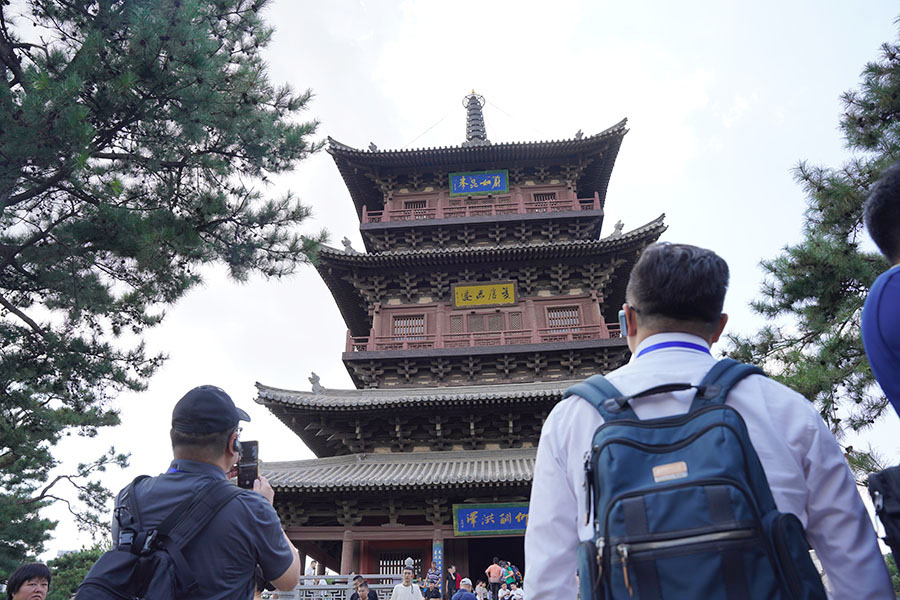

Huayan Temple, a cultural gem from the Liao and Jin dynasties
Huayan Temple, originally built in 1038, is among the most well-preserved temple complexes from the Liao and Jin dynasties (916-1234) that still exist in China today, covering an area of 66,000 square meters.
Hailed as an "art museum of Liao and Jin dynasties", the temple contains ancient art treasures of statues and murals, and plays a vital role in Buddhist culture and Chinese architecture.
The main hall of Huayan, the Mahavira Hall, was constructed in 1062 and stands as the largest surviving Buddhist hall from the Liao and Jin dynasties.
While touring the temple on Aug 22, Zhou Hui-lin, a head nurse from Taipei, said: "The Mahavira Hall is magnificent and spectacular when I first saw it. In Taiwan, I haven't seen a Buddhist hall with a history of hundreds of years."
The Grand Hall of Sakyamuni, the oldest preserved structure in Huayan built in 1038, features 29 Liao-dynasty clay sculptures that showcase the high level of statue art from that period. A smiling Bodhisattva in prayer, acclaimed as the "Venus of the East" by Chinese historian Zheng Zhenduo, stands out.
The highest structure in Huayan Temple is the 43-meter Huayan Pagoda, a masterpiece that blends traditional and modern elements, offering visitors a panoramic view of Datong.